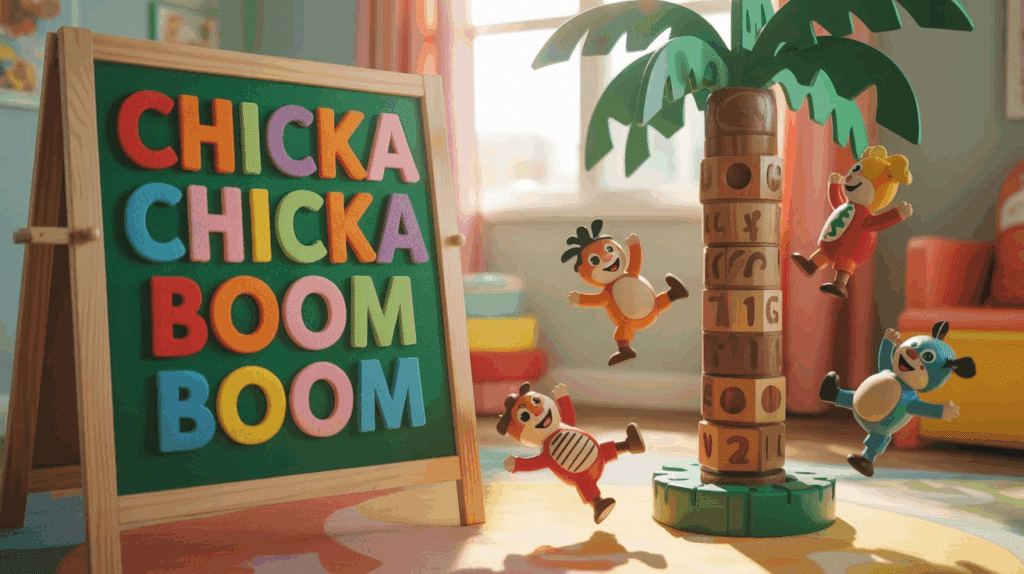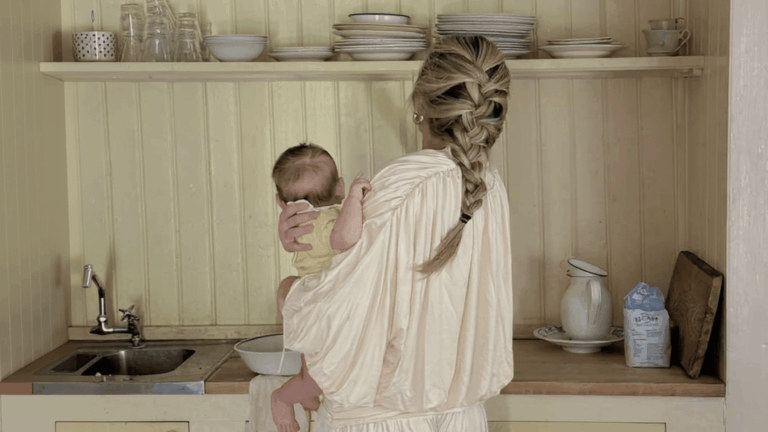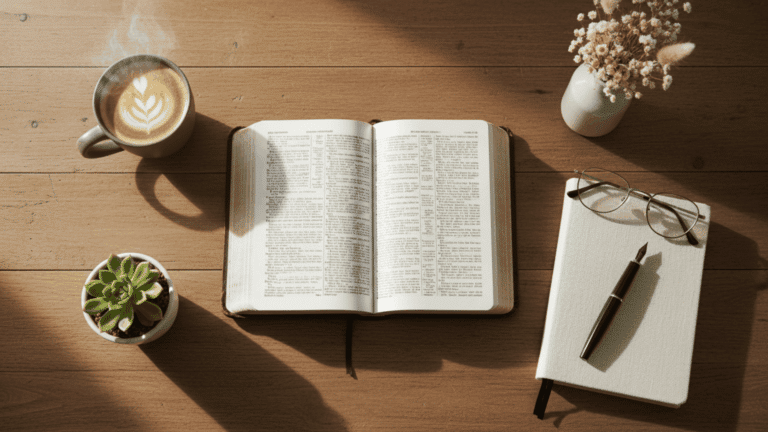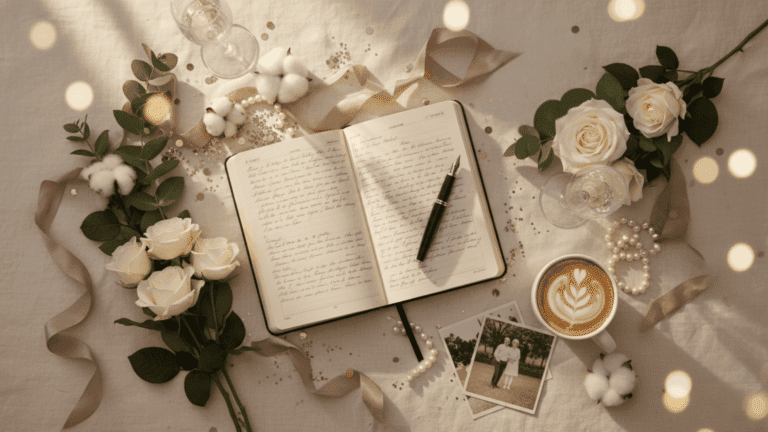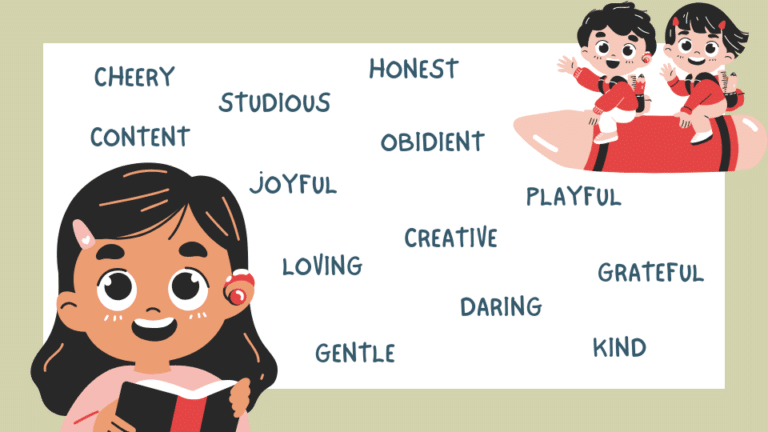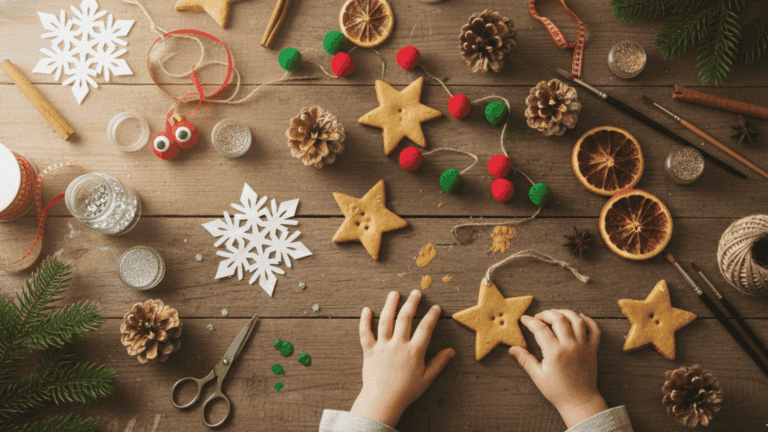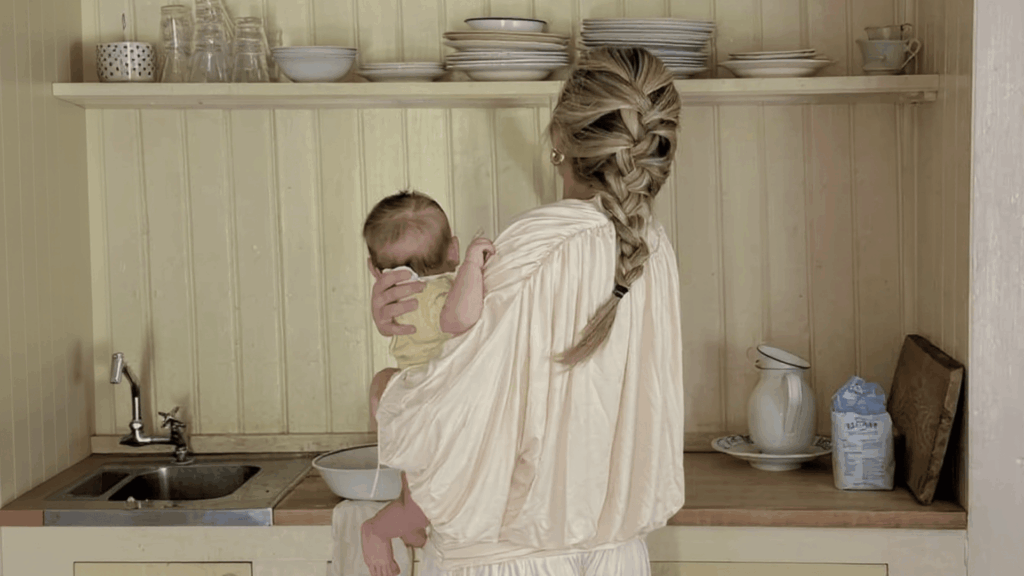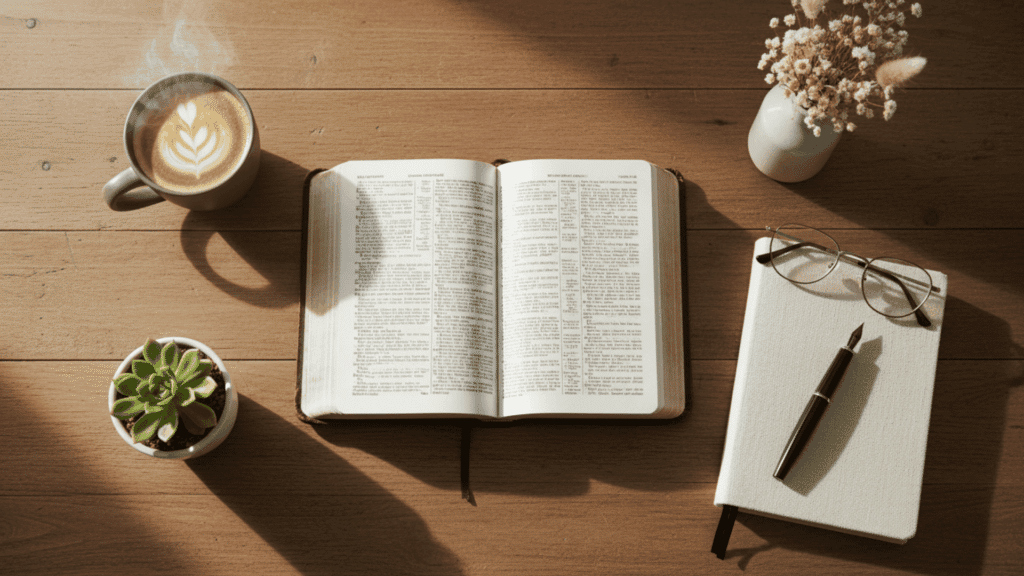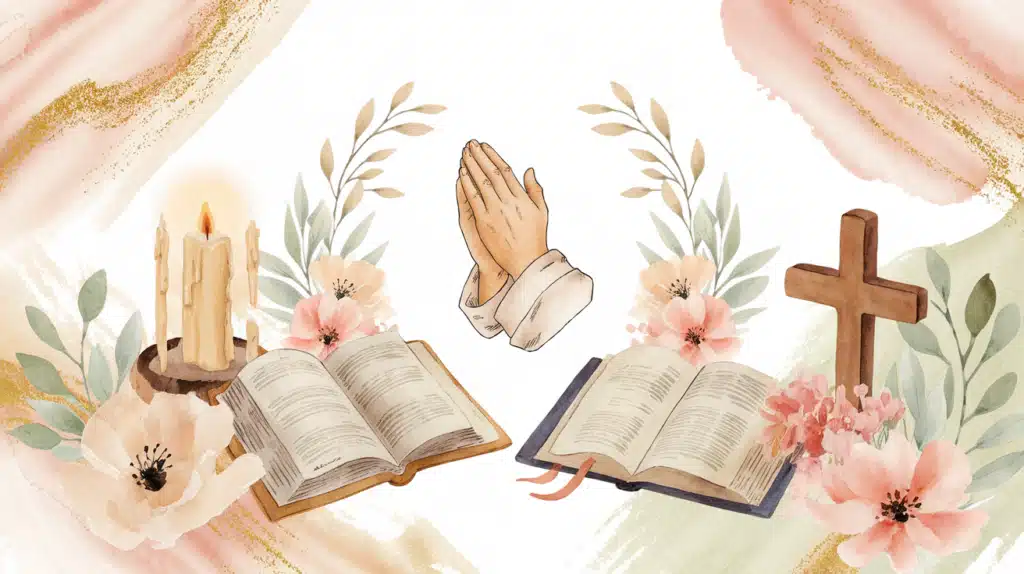Early childhood education thrives on creativity, engagement, and playful learning.
The beloved children’s book Chicka Chicka Boom Boom offers an extraordinary gateway to making literacy exciting and accessible for young learners.
By changing the simple story of letters climbing a coconut tree into a rich, multisensory educational experience, educators and parents can unlock a world of learning that goes far beyond traditional alphabet instruction.
The following activities are designed to capture children’s imaginations while simultaneously developing crucial early learning skills.
Why Use Chicka Chicka Boom Boom in Early Education?
Chicka Chicka Boom Boom is a valuable tool in early education because it combines fun with foundational literacy skills.
The rhythmic, repetitive text helps young children develop phonemic awareness and predict language patterns, essential for early reading.
As the alphabet characters climb the coconut tree, children become familiar with both uppercase and lowercase letters in a playful context.
The vibrant illustrations capture attention and support visual learning.
Cross-Curricular Chicka Chicka Boom Boom Activities
Chicka Chicka Boom Boom activities offer endless opportunities to extend learning beyond the pages of the book.
Below are some engaging activities that bring the story to life across various areas of the curriculum.
1. Alphabet Tree Craft
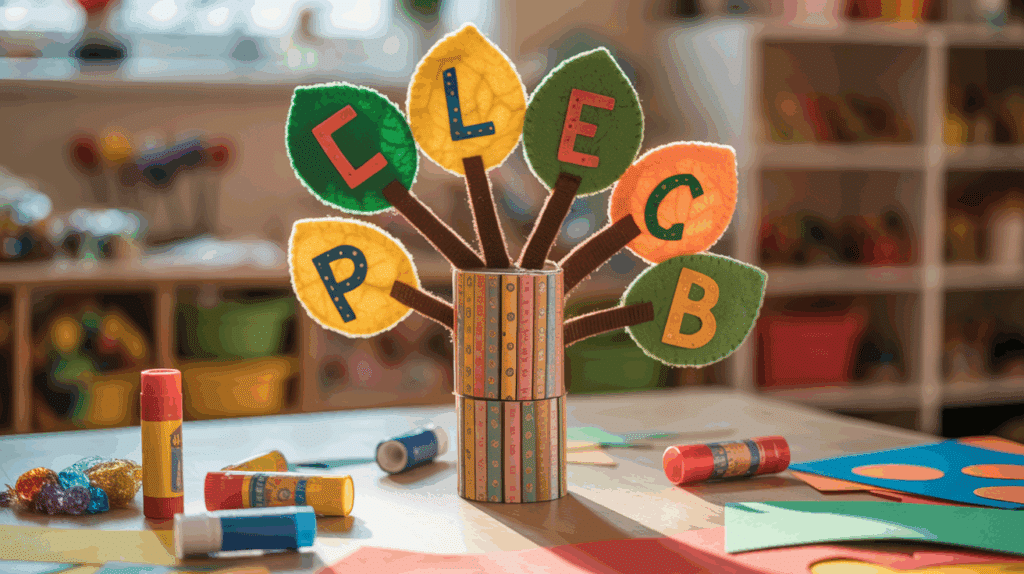
Children can create their own coconut tree on construction paper using alphabet stickers or cut-out letters. This tactile activity supports fine motor skills and letter recognition while letting kids retell the story visually. Teachers can also incorporate uppercase and lowercase matching, helping children differentiate between letter forms in a fun, interactive way.
2. Coconut Letter Hunt
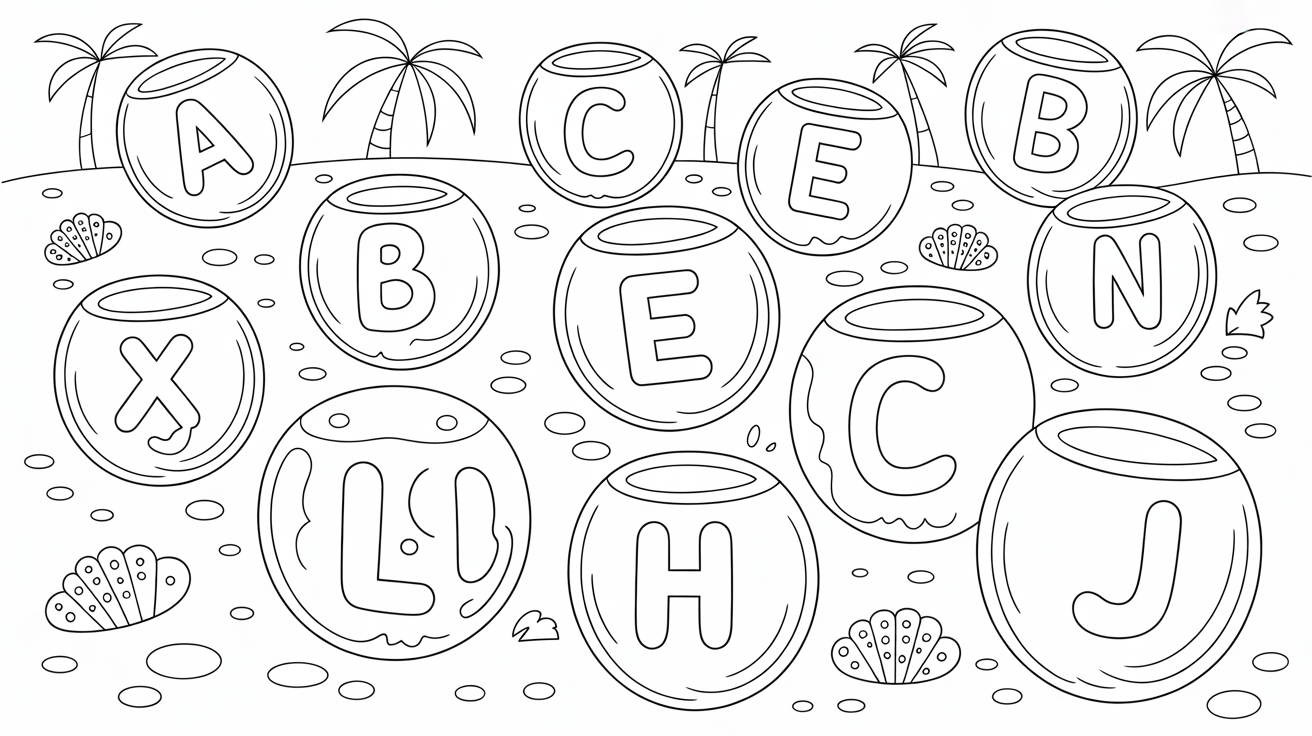
Hide paper coconuts with letters around the room or playground. As children find each one, they identify the letter and match it to a large alphabet chart or tree.
This physical, movement-based game combines gross motor development with letter learning, making it especially useful for kinesthetic learners.
3. Chicka Chicka Boom Boom Sensory Bin
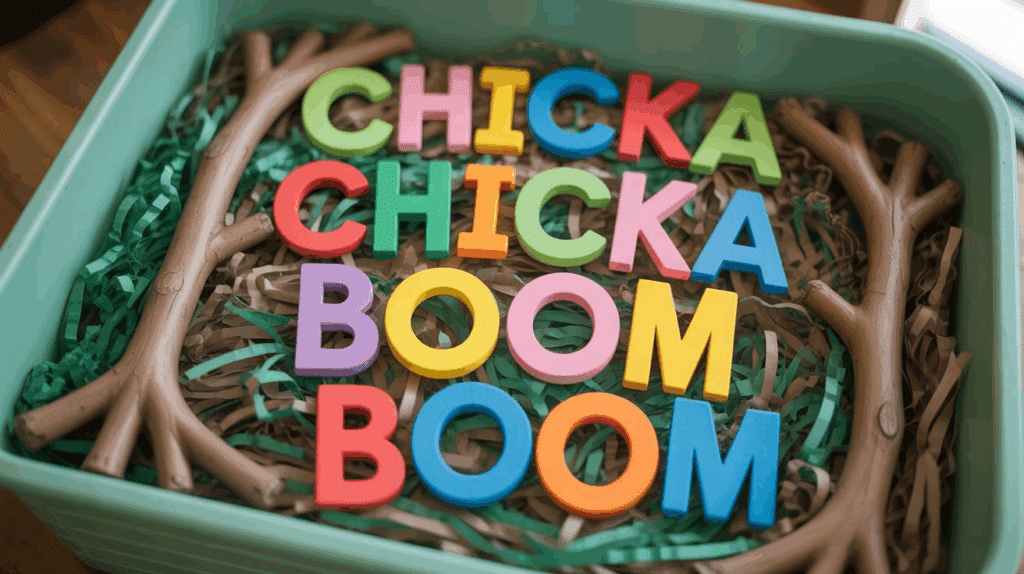
Fill a bin with rice or shredded paper, add plastic letters and small palm trees. Encourage kids to dig through the sensory material to find and name letters.
This multi-sensory experience promotes exploration, vocabulary development, and letter recognition while also being calming and engaging.
4. Letter Climb STEM Challenge

Challenge students to build a tree that can support magnetic or foam letters. Using materials like paper towel rolls, pipe cleaners, and tape, children practice engineering skills while applying the story concept. This hands-on activity builds spatial awareness and problem-solving, integrating STEM with literacy.
5. Name Tree Activity
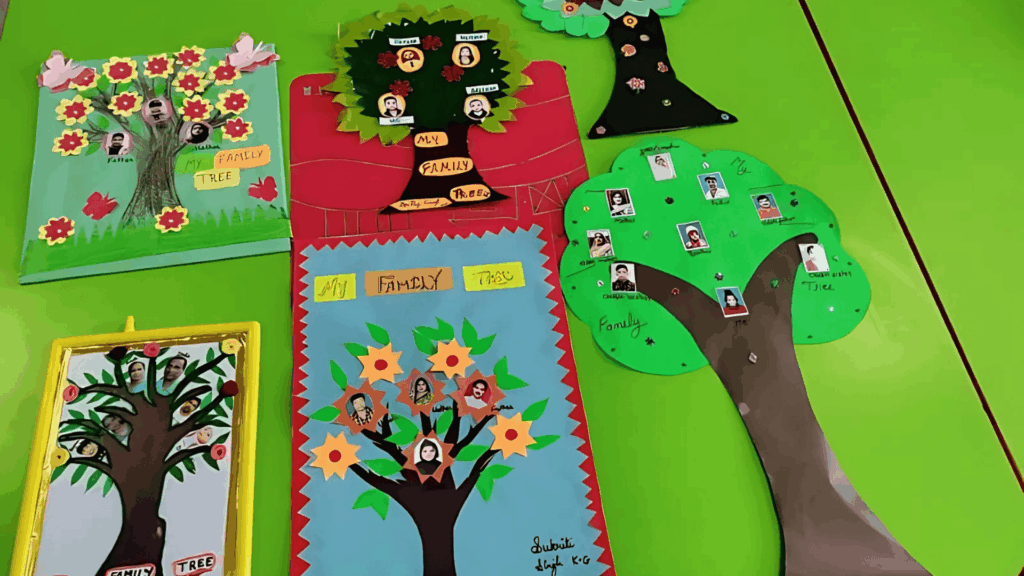
Each child builds their own coconut tree using the letters in their name. This personalized craft helps reinforce name recognition, spelling, and letter sequencing. Display the trees in the classroom to create a colorful and meaningful alphabet forest that celebrates individual identities.
6. Alphabet Relay Race
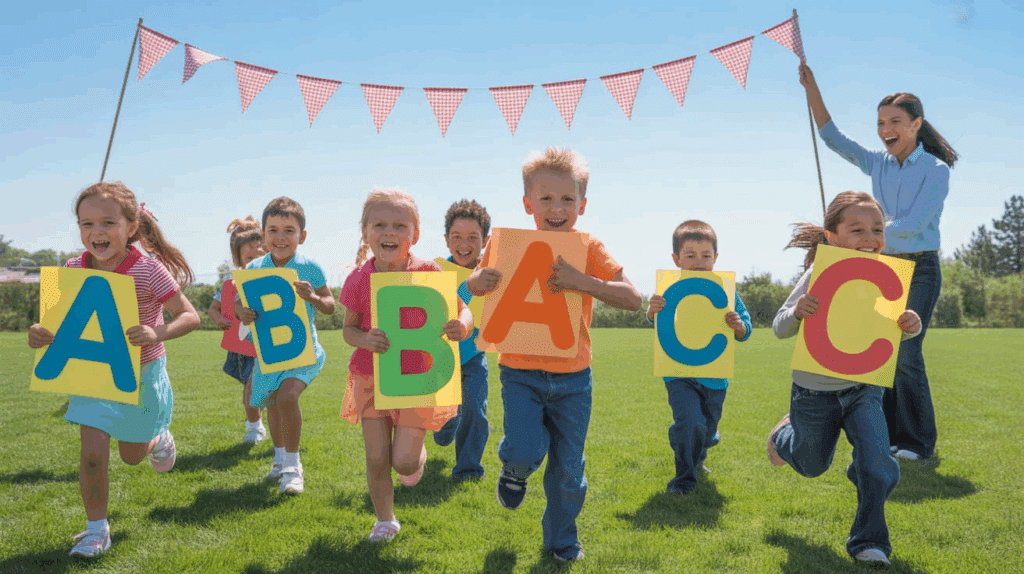
Set up a relay race where children run to collect letters and stick them on a magnetic board in order. As they complete the alphabet tree, they’re also working on teamwork, memory, and gross motor coordination. It’s perfect for outdoor play or a gym class tie-in.
7. Chicka Chicka Boom Boom Song and Dance
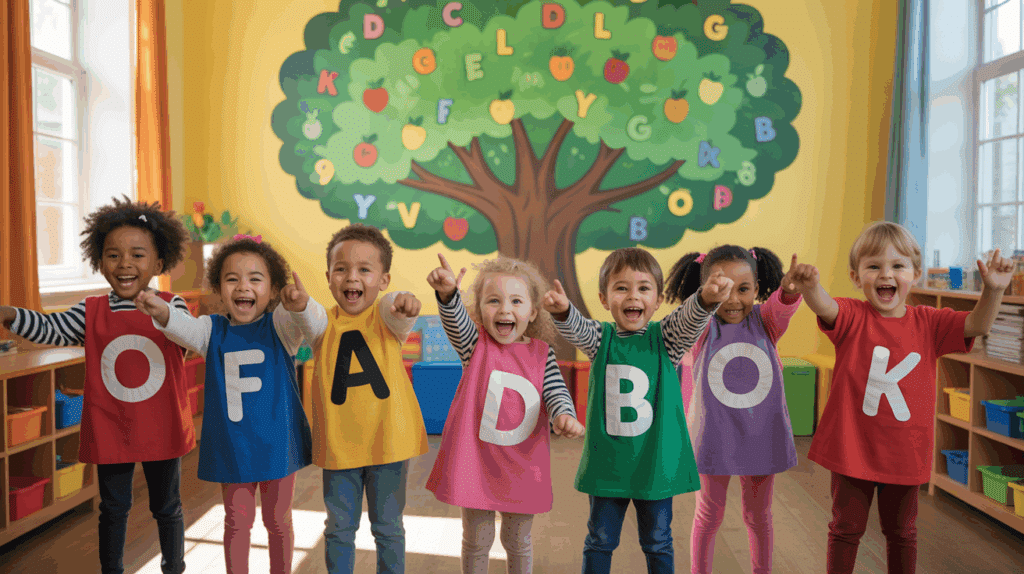
Add movement and music by turning the book’s rhythm into a dance-along song. Use maracas or homemade coconut shakers to keep the beat. Movement enhances memory and attention, and this activity makes literacy a full-body, joyful experience for early learners.
8. Letter Sorting with Coconuts
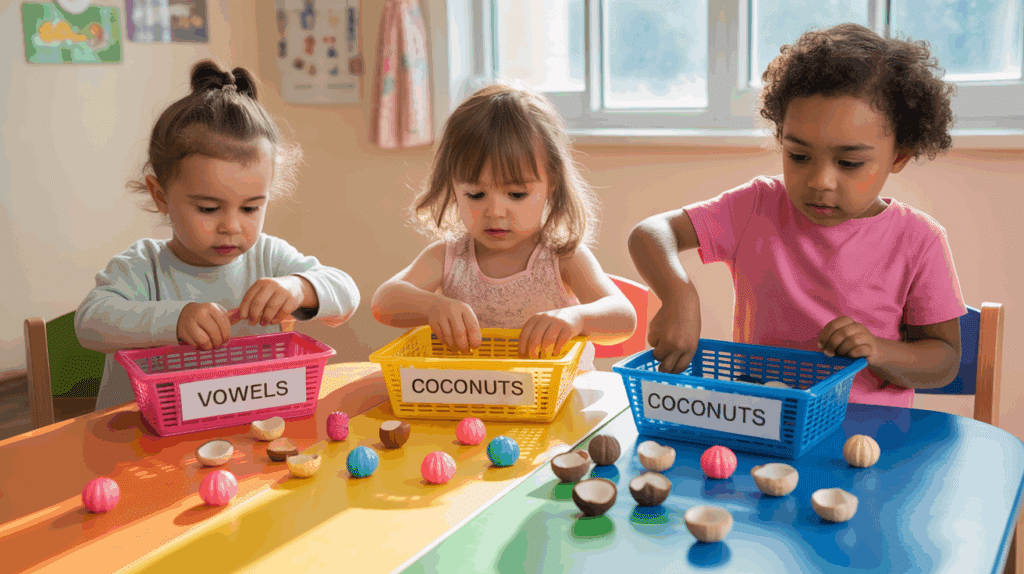
Create small “coconuts” labeled with letters and have children sort them into baskets by type: vowels, consonants, or by color/size for younger learners. This reinforces early categorization skills and sets a foundation for phonics awareness in a tactile, visual format.
9. Chicka Chicka Boom Boom Play Dough Letters
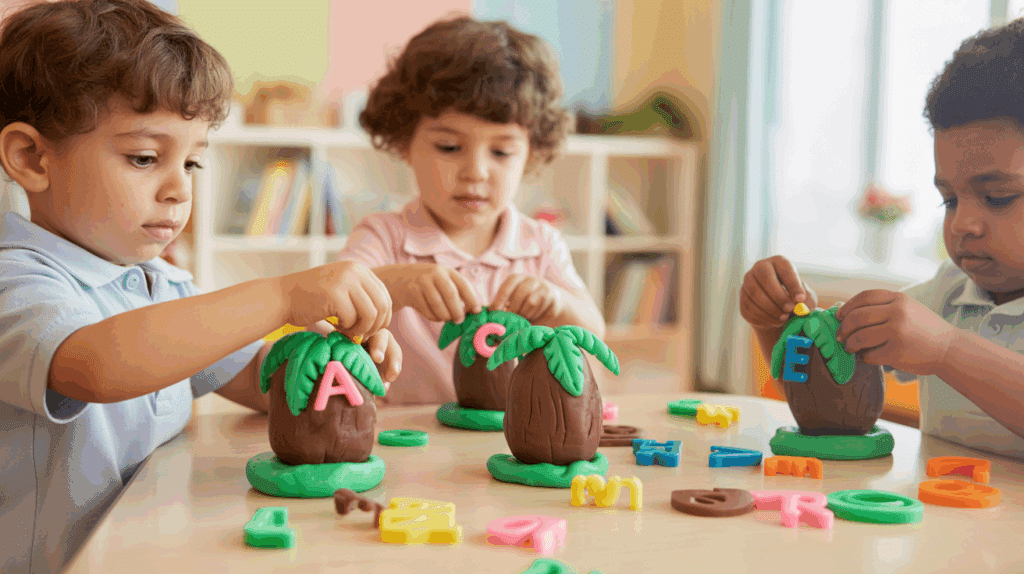
Using letter cutters and brown/green play dough, children build their own coconut trees and decorate them with alphabet letters.
This strengthens fine motor skills while encouraging imaginative play and letter recognition. It’s a great choice for center time or quiet learning zones.
10. Magnetic Alphabet Tree
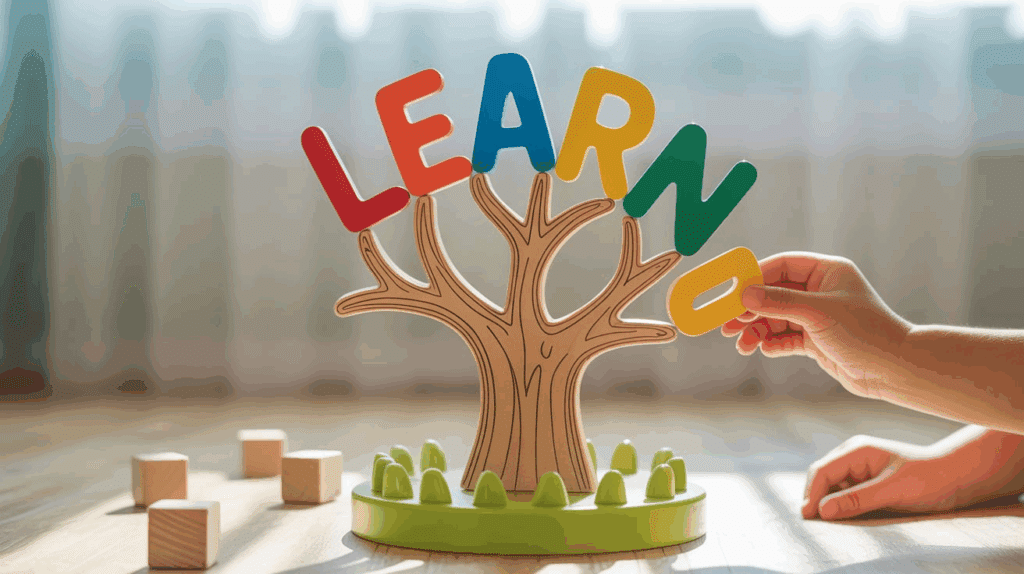
Place a palm tree cutout on a magnetic board and let kids “climb” magnetic letters up the tree in alphabetical order.
This independent or guided activity supports sequencing, letter identification, and fine motor manipulation in a vertical learning space.
11. DIY Chicka Boom Boom Story Stones
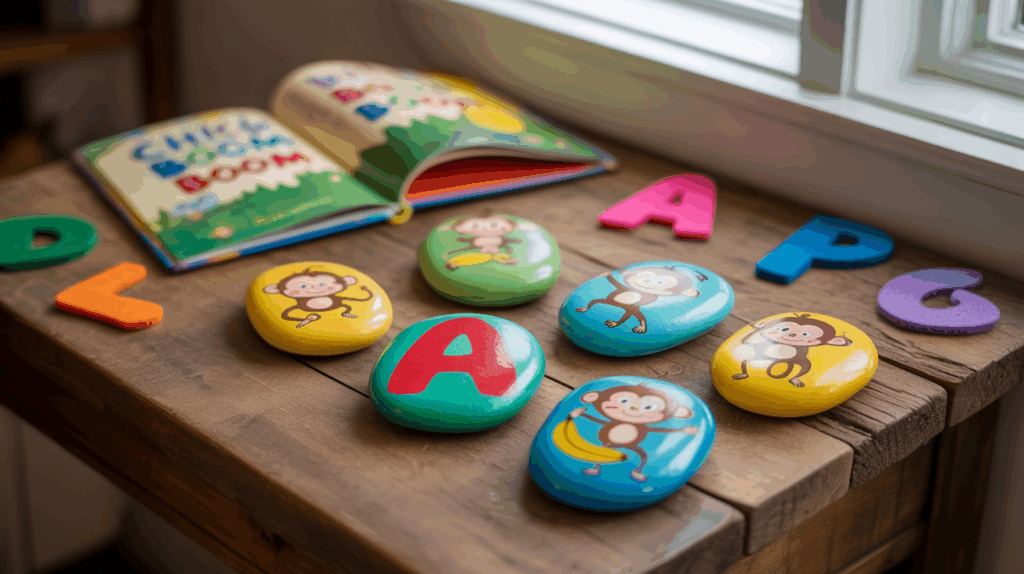
Paint stones with letters and tree parts so kids can build scenes from the book and retell the story. Story stones provide open-ended play opportunities that support comprehension, sequencing, and vocabulary through visual and kinesthetic interaction.
12. Chicka Chicka Boom Boom Water Table
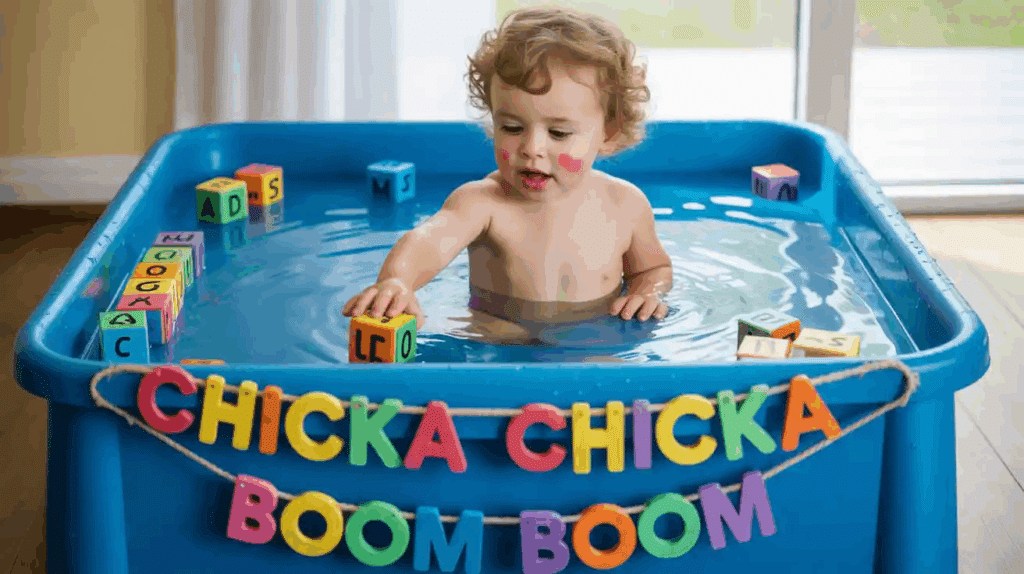
Set up a water play station with floating letters and mini palm trees. Children can scoop, pour, and “rescue” letters while practicing name or alphabet games.
This sensory activity is perfect for warm weather or indoor water tables and keeps learning cool and playful.
13. Chicka Chicka Boom Boom Puppet Show
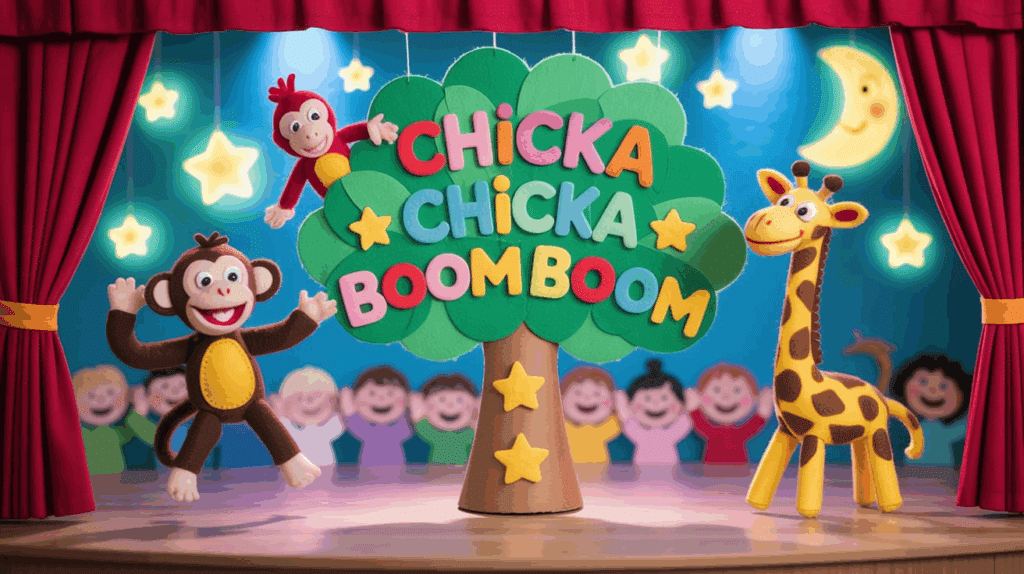
Have children create simple puppets of letters and trees using paper bags or popsicle sticks.
They can act out the story in small groups, promoting literacy through dramatic play, language expression, and social-emotional development as they collaborate and perform.
Recommended Age Group and Reading Level
Chicka Chicka Boom Boom Activity is a versatile and engaging book that caters to a broad range of early learners.
Its simple language, rhythmic text, and vibrant illustrations make it accessible and enjoyable for young children, especially those just beginning their literacy journey.
This book also serves as a supportive resource for diverse learning needs.
Here’s why it fits well with certain age groups and learning profiles:
-
Perfect for ages 3–6 (preschool to early 1st grade)
-
Supports early literacy development, including letter recognition and sound patterns
-
Engages young readers through repetition and rhyme
-
Highly effective for English as a Second Language (ESL) learners
-
Adaptable for special education due to its predictable structure and visual cues
Overall, Chicka Chicka Boom Boom provides a strong foundation for early literacy and inclusive learning environments.
Wrapping It Up
These Chicka Chicka Boom Boom activities demonstrate how a single, imaginative book can serve as a comprehensive learning tool that engages multiple developmental domains.
From fine motor skills and letter recognition to creative expression and sensory exploration, each activity invites children to interact with language in joyful, meaningful ways.
By clasping play as a primary mode of learning, we transform literacy from a daunting task into an exciting tale that children eagerly anticipate.


